-
Content
5,907 -
Joined
-
Last visited
-
Days Won
13 -
Feedback
0%
Posts posted by pchapman
-
-
So the two sources are the same for biplanes, except for the SIM allowing the option of unstowing the brakes on the front canopy and steering with them.
I don't think there is one standard procedure in the world that everyone agrees on because it isn't as if it gets tested a lot.
Nevertheless, I get the feeling that over time, the tendency has become to recommend a more 'conservative' approach, not unstowing the front brakes in a biplane.
From a 2013 post of mine:
Quotethese are my sources, that suggest that leaving toggles stowed and using risers is best:
-- Jim Cowan of CPS at PIA 2009-- John Leblanc of CPS in a 2004 lecture
-- the CSPA manual (PIM 2 rewritten 2010) [2020 note: although makes use of Jim Cowan's work]
These are in contrast to the Dual Square Report presented at the PIA in 1997, which mentions flying the front canopy in a biplane, or the 'dominant' canopy in a side by side, with gentle toggle input.
(However, it never explicitly mentions releasing toggles, what to do if certain toggles are released or not, or toggle positions for matching a canopy that has toggles set. Thus my opinion is that the toggles issue might not have been thought out as much at that time as in later publications.)
The USPA SIM basically follows the Dual Square Report, but is explicit about releasing toggles in order to steer.The APF also used toggled stowed -- And it says it is based largely on the PIA report, but with updates based on more recent field tests.
I also have a note about the USPA SIM, although I didn't note the year. Perhaps also 2013 or so? Has this explanatory text been removed since then? I haven't checked. Anyway, here's the SIM note:
QuoteWhile it does mention toggles, it also says:
"The landing with both brakes stowed option was added as an option in the SIM based on personal observations by some Board members of uneventful landings with brakes stowed on both canopies, and test jumps performed by Jim Cowan. The test jumps were not as extensive as the PIA dual square, but provided enough information that the Board wanted to include the information as an option."As you can see, historically much of the input on the subject in the past 20+ years is basically the PIA dual square report, with modification later based on Jim Cowan's tests.
-
Gary unfortunately passed away last year (https://www.dropzone.com/forums/topic/266644-gary-peek/ ) but the Parks College group have done a lot of study of canopy openings, both from the practical in-flight side and on the theoretical side - eg published conference papers on the subject.
-
I had been thinking of a similiar post to Deimian's, so with him breaking the ice here goes:
One does seem to hear of more damaging openings from larger canopies, but it isn't always so.
Confounding variables may be that older jumpers traditionally have sometimes been under big canopies, and maybe are more susceptible to injury. Or that heavier jumpers are also more likely to be on bigger canopies, and thus tend to start deployment at higher freefall speeds.
As an example of a bad small canopy opening, although with a non-standard slider: I know someone about 160 lbs, a DZ packer and thus with experience, who broke some neck vertebrae recently on a Crossfire 2 109 with a 'slightly smaller' than normal slider. Someone else thought it was acceptable to put that particular removable slider on in place of the regular one. Worked fine for 40 odd jumps but one time it didn't.
I certainly can't go against Performance Designs, but want to mention one factor among many competing ones in how canopies open.
Fill time certainly is longer for larger canopies which have larger internal volume (rising faster than the size increases, due to volume cubing when area is squared).
But what about plain old bottom surface inflation before filling?
If a 20 ft wide canopy can snap open and create as much drag as it does, then a 30 ft wide canopy might be able to snap open 20 ft wide in nearly the same time (with just a little more mass to push around)... and then continue to open fully to 30 ft, creating even more drag than the 20 ft canopy.
This only applies if the canopy expansion is very fast, so that the jumper hasn't been gradually slowing down. With more time involved, the 30 ft wide canopy won't add more pounds of drag because the jumper will be slowing rapidly before the canopy area gets too big.
So that's a scenario where I'd rather have an explosive opening on a smaller rather than a larger canopy.
As for the Para-Flite experience, I wonder if the trends in zero-p canopies are different than in F111 style ones. We never had openings quite as explosive back when the fabric would let more air through.
And just for fun and maybe just a little education, a few pics of hard openings I've seen as a PFF (~AFF) instructor with students -- where they had a largely open canopy while only a short distance away from me in freefall. Shows 5 different opening in series of 1 or more pics. [Edited to change description, as file names not shown in-line]
Some were sore but no long term injuries. A blown brake line in pic #1. The last series shows how a canopy can start inflating a lot in the middle even when the slider is at the slider stops on the stabilizers -- I haven't quite thought through the geometry issues contributing to that. (These students were on Aerodyne Solo canopies, full ZP versions. They later shipped larger sliders that helped somewhat.) Some filling of the cells is happening, especially in the center cell in some photos, that may be driving some openings, but there's a lot of 'squished flat' bottom surface inflation happening in many photos too.
When your student is still within 50 feet of you and slider down, you're glad not to be them! -
20 hours ago, planetoi said:it's more like I went from my instructor doing everything for me and all i had to do was jump and have him there if i need him, to being completely on my own. I feel like I don't have the knowledge or the experience to do it on my own.
Yes, it can be a problem with AFF or the similar PFF, that a lot of minor stuff gets a bit missed along the way. Dropzones are busy, instructors are busy, instructors aren't paid a ton, so the emphasis is on the big stuff: Your freefall maneuvers, your pull, flying the canopy to landing, your flare.
All sorts of other stuff should be gradually introduced during the process -- Getting you started to being more independent in checking all the components of your gear and donning it, starting to learn how to spot that your exit point is correct, learning to evaluate the dropzone weather and winds situation, etc. Each jump you should be taking on a little more responsibility, doing a little bit more yourself. But things get rushed and it is quicker for the instructor to deal with all the details, vital as they are.
So there's plenty of learning to go. If you are in the USPA AFF system, I don't know the details of how it works, but you're not truly solo yet, you're not licenced and on your own. There's still supervision.
You may indeed need to ask instructors more questions and have them slow down. A slow or rainy day at the DZ may be useful in case you do need to catch up. Take the time to go over gear checks some more.
Similar to what ghost47 has said, go through the jump in your mind from beginning to end, and ask yourself whether you know what you have to do. Find specific things to address.
Do I want to skydive at all? If yes, continue.
Do I know how to select the right gear? Do I know how to inspect it? Do I know how to evaluate the weather? Do I know how to plan the circuit pattern myself?
And so on. You'll get some idea if there are specific things that you know well (and don't need to have excess fear about), or if there are specific things that worry you because you're unsure about how to do those tasks. In which case, get more training on those things.
Overcoming fear is part of the process of becoming a skydiver. That's part of the fun of hurling yourself at a planet. Some fears are entirely rational, some need to be overcome.
-
Hmm, interesting task, although sounds almost like a circular issue. Since there are no worldwide skydiving laws or ones handed down on scrolls since the ancient Greeks, what is defensible may be whatever the USPA puts in its current manual.
Canada's CSPA rules are a little looser, with 60 days for a checkout jump for a student, and I don't think any formal limit on retaking the FJC -- although I've seen a DZ use 1 year as a standard. But while that may be of interest to skydivers discussing how things are done across the world, it isn't gonna matter a bit to a jury in the US of A.
Vague rule or ones with worlds like "should" or "recommendation" can sometimes be useful. Harder to pin someone down on them...
-
Sounds something like that, having the alti on standard above-sea-level figures.
(Another possibility for having the issue in general, although not in your particular case, is zeroing the alti wrong, missing that it is set at -1000 feet instead of 0 feet. That's for altis in feet where one full revolution of the big hand = 1000 feet.)
Since it is vital for pilots to report to air traffic control the proper way, above MSL, I've seen jump planes with a skydiving alti stuck to the instrument panel so that can be zeroed on the ground and the pilot doesn't have to do the mental math all the time either for ATC or skydivers.
I had the same problem once when dropping static line students years ago. I couldn't convince the pilot he was wrong, so I just asked him for an extra thousand feet of altitude for these particular students. Which he gave me, no problem, putting us slightly above our desired altitude instead of at an altitude below what's allowed...
-
Thanks Councilman. All my old bookmarks say ukskydiver.co.uk -- so they changed their address slightly to uk-skydiver.co.uk.
As for the library, there is the Linda Hall library in Kansas City. Can't recall if there are any others.
"This digital collection is a portion of a more extensive Parachute History Collection, and was developed as a collaborative venture between the Linda Hall Library and the Aerodynamic Deceleration Systems Technical Committee of the American Institute of Aeronautics and Astronautics."
The old parachuting books are fascinating and contain stuff not in our 'standard' histories of parachuting -- since they were military, or stunt jumper, or 'foreign', or just didn't happen to make it into the sources that everyone then copies. Found a few of the old books to at least photocopy from university libraries.
-
In Canada I've seen us respect the concept of the UPT rules -- only EXPERIENCED RW folks need apply!! -- while ignoring some of the details. Eg, if someone has plenty of experience, and is generally current, we don't worry about having to have a tandem or AFF style rating 100 RW jumps in the last year. That totally shuts out a lot of jumpers, even super current ones, if they are jumping in different disciplines.
The UPT rules are so dumb that many who do tandem videos on weekends wouldn't be allowed to follow a tandem out the door... if they were not wearing a video camera. So screw you UPT.
Which calls the whole list into question, even though the concept is very important, as tandem students are held to a higher safety standard. (Plenty of cases out there where tandem RW went wrong, including stuff like where the RW jumper's mom gets killed as a tandem passenger, due to bad RW.)
But up across the border we can be more dismissive of USPA / UPT rules and any associated lawyers.
-
Does any museum care about such stuff? Especially if it isn't military or maybe smoke jumper related. Kind of thinking out loud here.
There are always the collectors of old gear out there of course. Some things get bought and sold on ebay, although some of that wheeling & dealing is more about making a buck than preserving history. Others try to keep gear airworthy or at least preserved for history. As you likely know, 'Beatnik' might have the biggest collection of vintage parachute gear in Canada. I keep my personal collection of vintage gear & magazines fairly small, but still have issues with how much basement space is taken up...
Then there's the idea of putting something online, like scanning old manuals in to rigging manual sites. BUT: Ugh, do any even exist now? Parachutemanuals.com and the ukskydiver.co.uk sites are both gone. A lot of lost history, although someone in the know could find that stuff on archive.org hopefully. Or there's someone like Andrew Hilton with a big Flickr site with photos of his vintage gear and accessories, so that at least shares something with other enthusiasts.
So, you got anything interesting? :-)
-
Hmm. I guess one would have to look at each countries' training system, or indeed what particular DZs teach. Certainly new jumpers are taught about airspace, weather, equipment technical info, etc, and there are lists of such things in training manuals, so that each phase of a jump is considered.
Skydiving doesn't have as much money involved like in say commercial or military aviation, so the progression systems are more casual (after the initial licence) and more dependent on the jumper learning the skills themselves, and they and their buddies evaluating their own skills to do a particular jump. (The UK is more stringent than the US & Canada, with some sort of more formal allowances to do RW or freefly or swooping, something that would be handled more at the local DZ level on the left side of the pond.)
I'm not sure whether 'airmanship' is just something that's there when none of the individual pieces are neglected, or whether it is some separate concept. Certainly, it is often used to apply to things "beyond the letter of the law", beyond the basics of the rules, to include a more nuanced appreciation of all the factors including how to interact with others in the air.
Perhaps a little more Human Factors stuff can be introduced. For example, one thing I'd like to see pushed a little more in some places, is the idea of a self-evaluation of the risks, potential risks, and challenges on any particular jump. Go over all of that and see whether the jump still makes sense, or whether something about it should be changed.
-
"On all other tandem container systems, the main container closing and the drogue attachment are two separate systems, at two different locations."
Ah thanks, I mistakenly thought the question on the test would relate to potential dangers of Sigmas in a test for Sigma instructors on how to jump Sigmas. That answer about system design was "too obvious" to me, given that I rigged the DZ's first Sigmas 18 years ago...
Still, if they ask for "primary causes", I'd like to see a list of all tandem accidents say in the last 10 years and have causes listed by frequency.... -
Non-US DZ but US registered Caravan: Skydive Burnaby, Ontario Canada. N806JA.
(Yes it is a short Caravan, not a Grand Caravan.)
-
96- List the primary causes of tandem incidents that resulted in a fatality
That last one has always thrown me. The Sigma manual (at least the last I checked) has nothing listed under "incident", "accident", or "fatality" that is in any way relevant. So "read the manual" seems not to help??
I always came up with some B.S. generic answer that seemed to pass. Duh, 'not following proper procedures' for example.
Luckily the DZ I'm at took that question out of the tandem exam in recent years. We have customized versions of the exam that are still really long, but cut out some of the less useful stuff, and add in DZ specific stuff. (We're in Canada, so we don't care as much about US lawyers. We still try to adhere to industry best practices.)
-
That's an interesting one!
I have heard (somewhere on dz.com years ago) of a hook knife becoming unsecured, flying up on opening, and cutting a line.
-
 2
2
-
-
16 hours ago, Westerly said:a sabre 1. throw that thing in the trash.
Or put a domed or pocket slider on it.
(I think we've had this disagreement before! :-) )
-
QuoteWell, they won't get their BPA Skydiver A licence doing RAPS jumps.
@ bokdrol: Like with a static line or IAD progression in North America, it does lead to getting licensed, even if static line or IAD alone is not the only thing one has to do. You're trying to be misleading. If you really don't like RAPS as a progression method, fine.
Your statement is like saying, "You can't become a Commercial pilot by getting a Private pilot's license." Because, duh, you also need a Commercial license after the Private.
Moving along now.
[Edit: And the British poster above is clarifying that RAPS seems to encompass the whole progression system to a license, not just the actual initial RAPS jumps. Just like 'static line progression' includes freefall jumps with coaches or instructors past the initial static line jumps.]
-
 1
1
-
-
For Skydive San Diego:
QuoteAlso, no cameras of any kind will be permitted for usage on the property, either on the ground or after takeoff.
What's that all about? Afraid of bad publicity if one person out of a load pulls their mask off for a minute?
Can freefliers even jump without something on top of their helmet to tell them which way is down?
-
I don't think I can help but can only comment a little for anyone else wondering about this:
That document is a lot to digest, especially when it isn't like there's a 60 day comment period but they want nearly instant replies. And it isn't clear when all that was published. Maybe there's a date there some place in the 200 page document. (Even if big parts of that are sections quoted from regulations.)
It is hard to comment on any one part of all that without understanding the rest.
It was confusing that in the initial graphics they showed the RSA and OFA, and then had a table showing that even the Class III experienced jumper landing area was 44.8% within it --- yet the graphics showed that the Class III area was completely outside it. And on the map of where LZ's and RSA/OFA intersect, marked it 100% in a bright red that doesn't correspond with the rest of the graphics.
However, far later in the document there a map which also adds a taxiway TOFA safety area -- and that is what they are referring to. So the initial annotated maps were rather deceiving.
Late in the doc there's a response from Start Skydiving's DZO. I see the focus is on the idea that the FAA never intended the RSA/OFA/TOFA to apply to skydivers landing or crossing runways, and that the DZ is compliant with FAA regulations.
-
 3
3
-
-
To anyone who says, "No exceptions because it's about SAFETY! ":
The FAA is in the process of publishing a list of temporary exemptions for pilots -- especially commercial pilots -- who haven't been able to get flight tests to confirm their proficiency, haven't had enough current experience, etc. Over time, more and more pilots 'time out' from their requirements.
Therefore, for those who condemn ANY possible change to USPA requirements, the USA's entire aviation system must now be declared UNSAFE. Oh, the humanity!
From some FAA news bulletin:
QuoteThe FAA has published a Special Federal Aviation Regulation (SFAR) that provides regulatory relief to a wide range of people and operations affected by the COVID-19 public health emergency. The relief applies to pilots, crew members and other FAA certificate holders including some drone pilots who have been unable to comply with certain training, recency- of-experience, testing, and checking requirements due to the outbreak. It also provides relief to certain people and pilot schools who are unable to meet duration and renewal requirements, including extending the validity period of FAA medical certificates.
(Canada has already implemented many similar measures. "Blame Canada.")
And now, back to a more reasonable discussion of what changes might or might not be appropriate in the USA for skydivers....
-
 2
2
-
-
QuoteThe problem with bending the rules is how far is too far?
Well, that's what's up for debate. It can be for governing organizations to agree on. If there are new rules, technically none are being bent. :-)
QuoteAlso your understanding that everyone in the sport is wildly uncurrent is highly inaccurate.
I wasn't implying that. Fair enough, I wrote something about "the whole industry" for convenience, when it really is a 'significant part of the industry, that can only be solved on an industry-wide level'. Unless affected DZO's just ignore USPA rules. It doesn't help some small northern DZ if a bunch of people at some big southern DZ were still jumping regularly in early March, unless all of their instructors vacationed at the southern DZ too.
In some places, most might not have jumped since October. Although I have jumped a bunch in snow in winter, it isn't uncommon for some northern DZ's (eg, in Canada) to be closed end of October until some time in April. Not having jumped for 150+ days, in a regular non-pandemic season, is not seen as a big deal here in Canada. (Although some refresher jumps might be done, tandem recurrency jumps, Safety Day, that type of stuff.)
-
 1
1
-
-
@ 20kN
You opinion on the rules is valid. However, it isn't the possible valid one, and I don't buy into the background reasoning.
The 'no exceptions because of safety' is just BS, because rules are to some degree arbitrary. A jump after 59 days isn't perfectly safe while a jump after 61 days is criminally unsafe. If some country had a 90 day rule instead, is their entire skydiving system 'unsafe'? Some countries may not have any specific rules, and leave it up to the DZO to decide whether an instructor is current or not.
Because "the instructor literally has the life of another person in his or her hands" is pretty much crying, "Won't somebody think of the children!" (i.e, hysterical woman from The Simpsons)
The drunk driver argument doesn't hold either, because the idea is that nearly everyone's car has crashed, and it is a problem for the whole industry to get current again. Small compromises can be made to ease the process.
But I'll leave the USPA people to argue out the specifics of what best applies to the USPA situation.
-
So in the USPA you have some currency requirements for everyone, not just students?
(In Canada for the CSPA we have currency requirements for students. And annual currency for instructors and coaches to keep those ratings active (X jumps per 12 months stuff). But nothing about 'after 60 days without a jump you need to...'.)
-
 1
1
-
-
1 hour ago, cosmicgypsy said:This 20yr thing got me thinking, so I decided to see if I could find information about times affect on parachutes.
In one earlier thread I was involved in, I mentioned an Australian study that did some tests and extrapolations. Their results suggested only 1.5% strength loss per decade in storage at 20C.
Ref.:https://www.dropzone.com/forums/topic/22664-expected-life-of-a-canopy%3F/
A Sandia labs paper from '94 perhaps similarly noted:

I just have a few random papers on the issue, nothing really modern, and don't have a good overall handle on the issue. But I get the impression that nylon, especially if not stored at high temperatures (and not around any harmful chemical contamination) degrades only very very slowly over time. Making arbitrary 15 or 20 year life spans on gear rather silly.
-
12 hours ago, mark said:Fixing the link:
https://www.calpaclab.com/nylon-chemical-compatibility-chart/



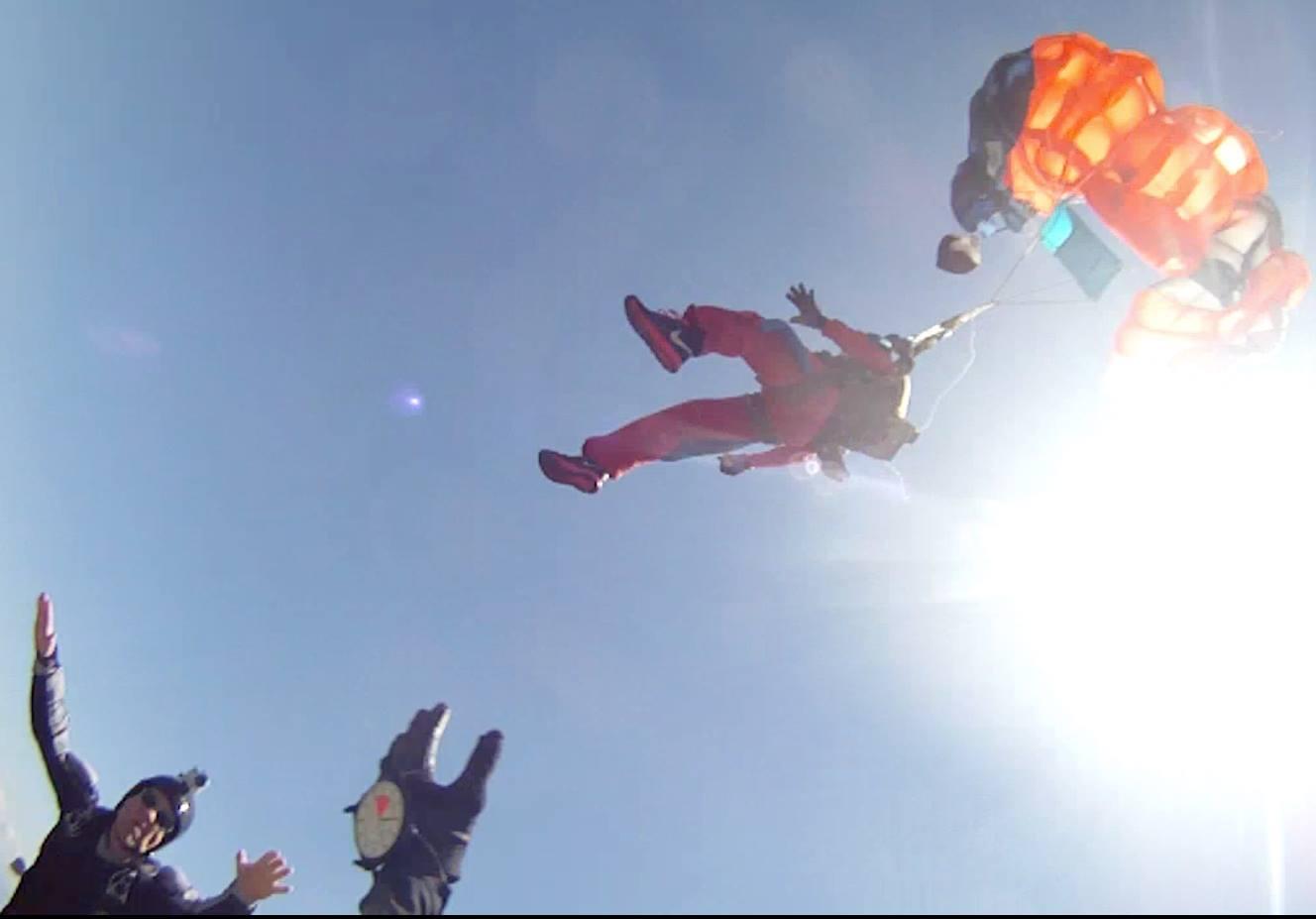
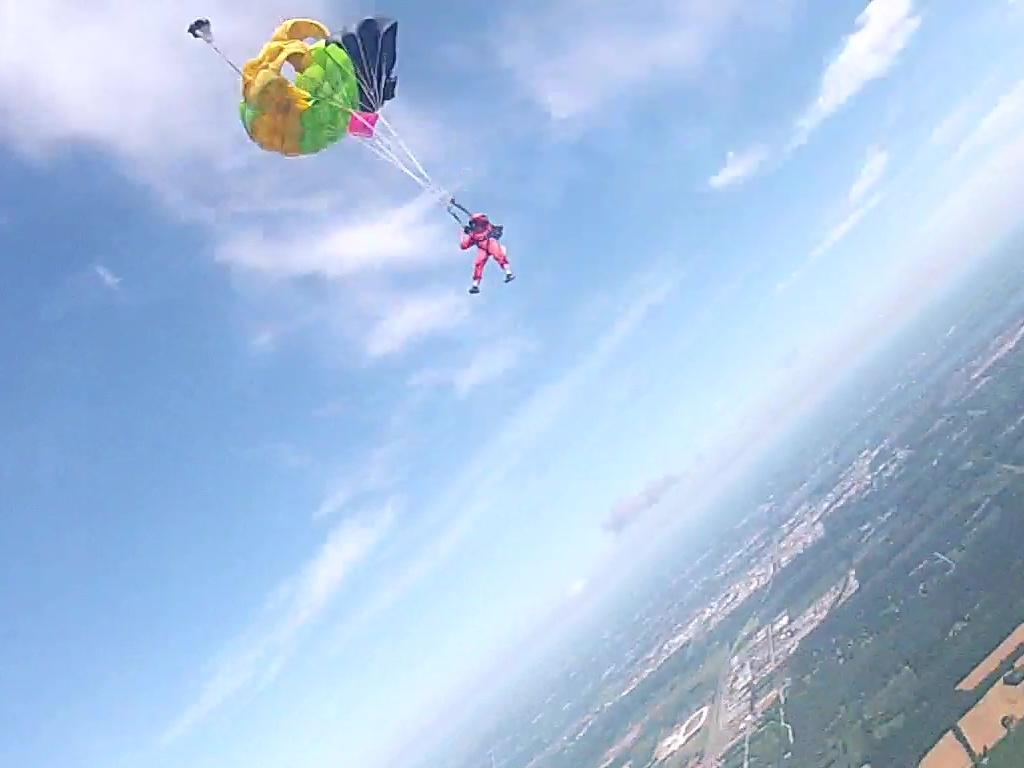
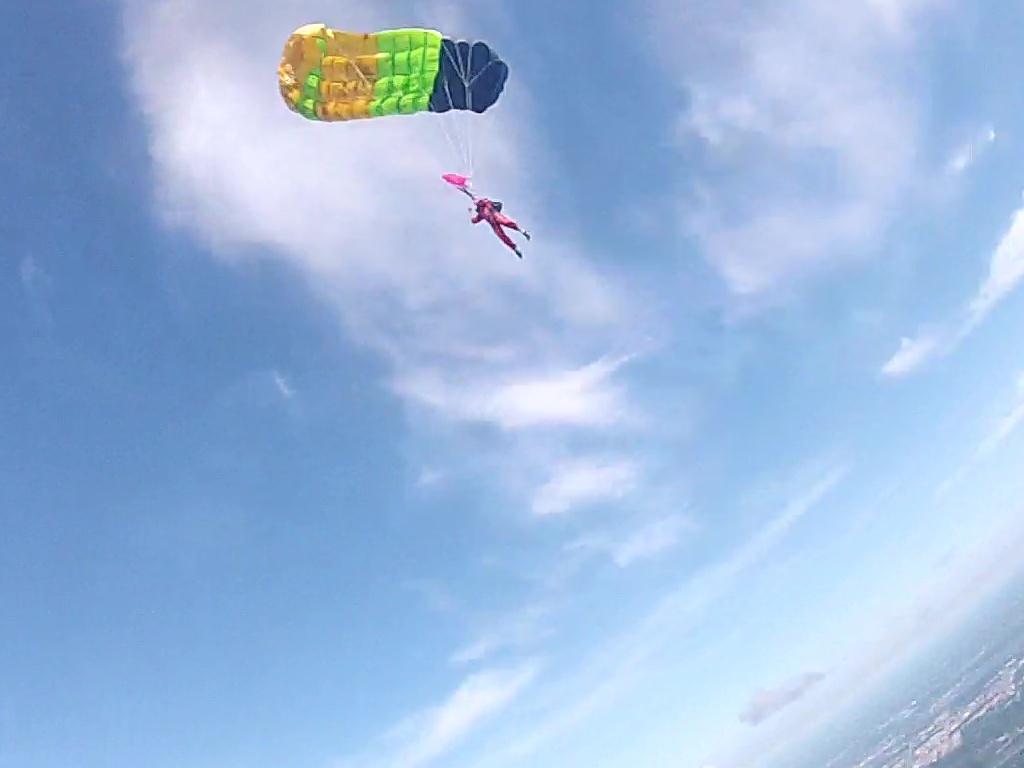

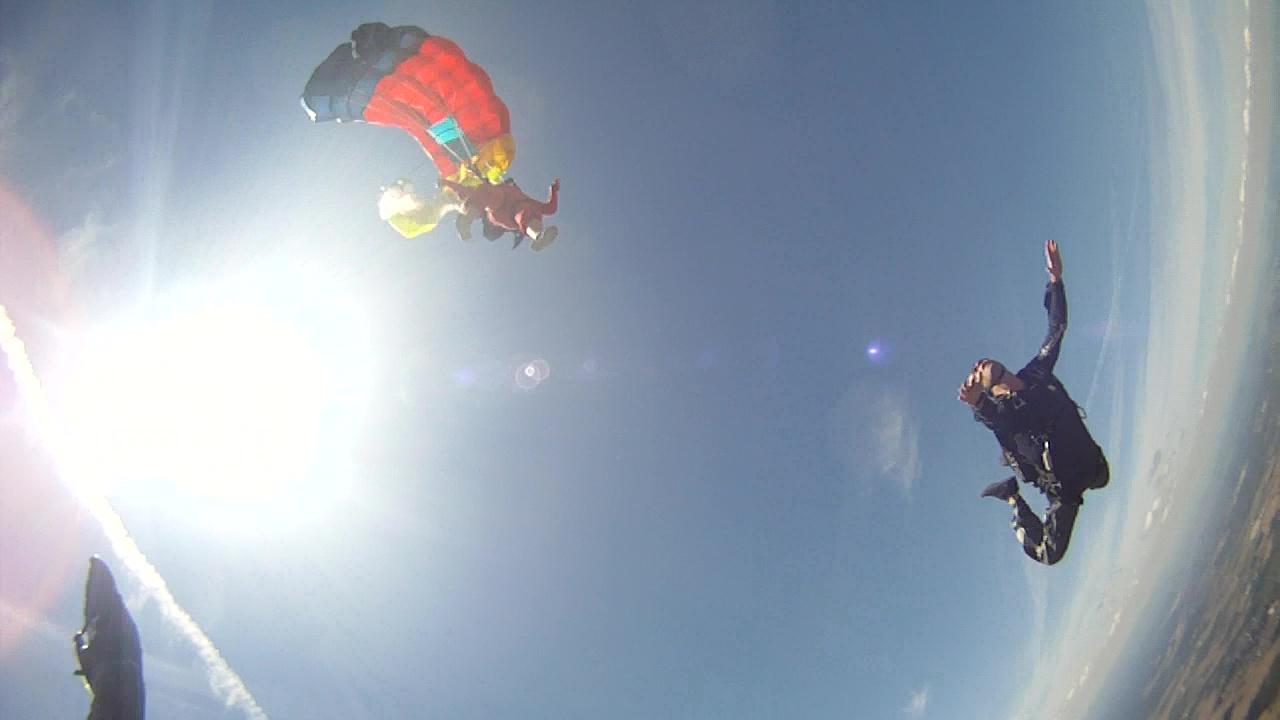


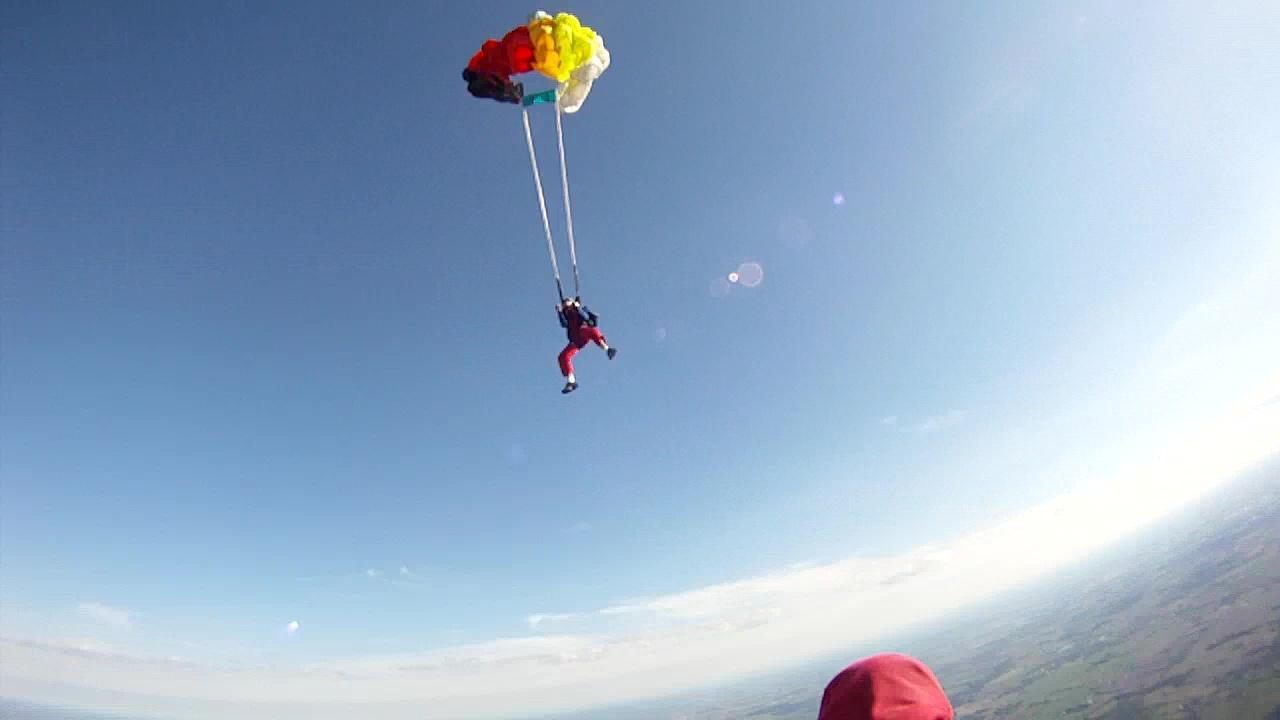
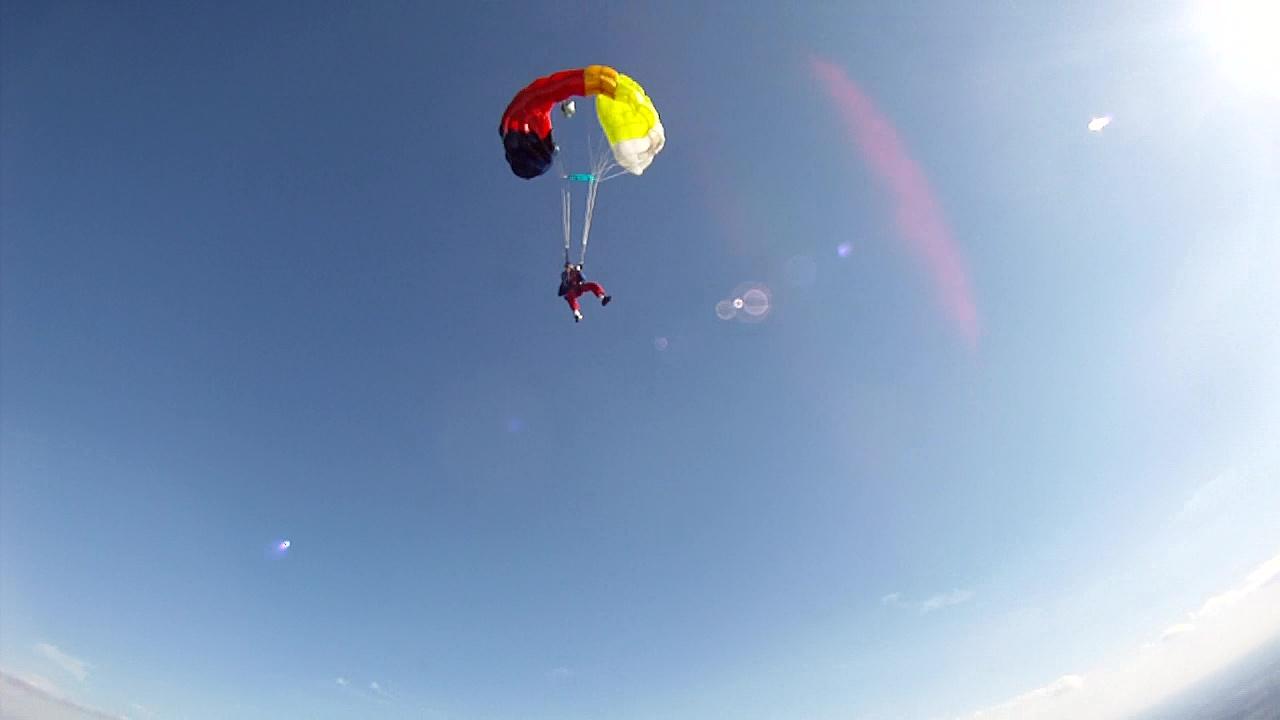
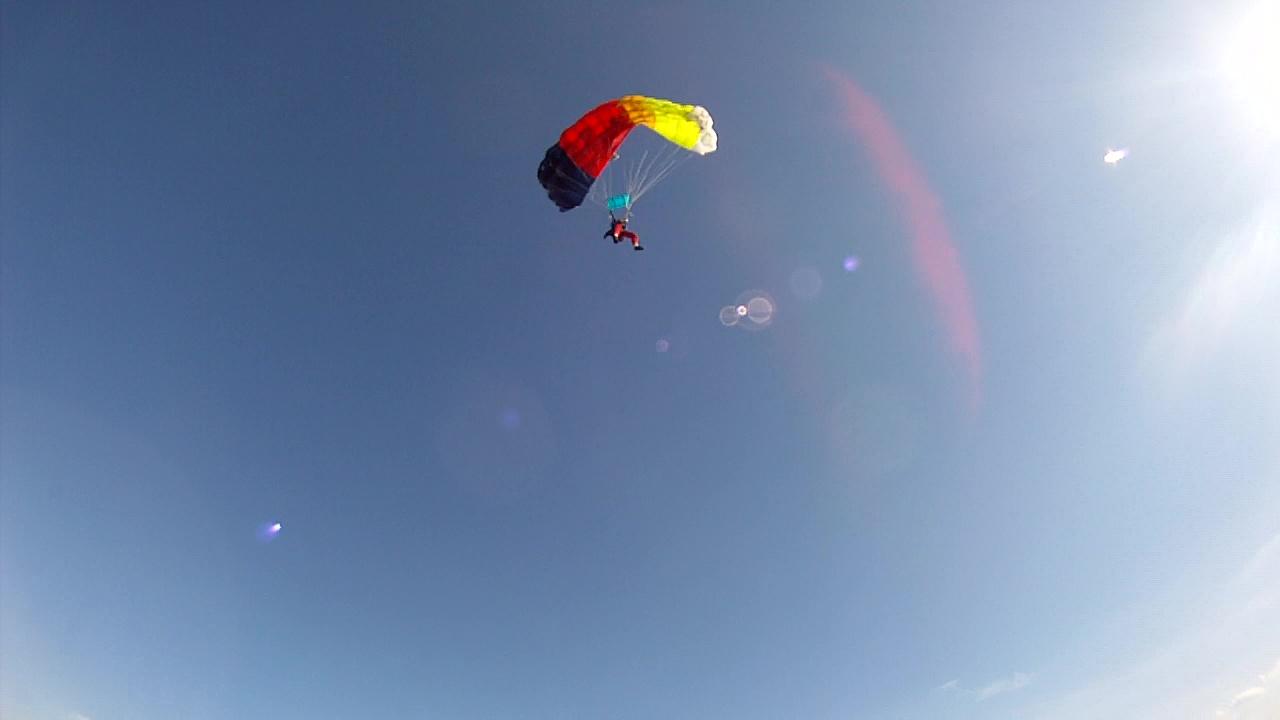

Looking for a tall AFF instructor(at least 6’2”) hopefully in SoCal but would consider travel.
in Instructors
to the OP:
I'm not sure that there's much different for a taller vs shorter student (or instructor) in terms of how to fly?! But I'm saying this as only a moderately experienced AFF style instructor. The basics are the same even if individuals with different bodies will have to emphasize particular things a little more or less. (Eg., someone less flexible may have to work harder at arching, or someone tall might have more issues with getting a good enough exit position in a smaller doorway.)
Tall or short, one has to keep arms and legs in the right positions, not too stiff, but not to floppy either. Every student has to get that right, to keep from chipping, flipping, spinning, sliding away, etc.
It almost sounds more like there's a bit of a disconnect between the instructor and student in terms of teaching or learning styles and techniques? It happens. Instructors aren't all perfect either. Have you run out of other instructors to try learning from?